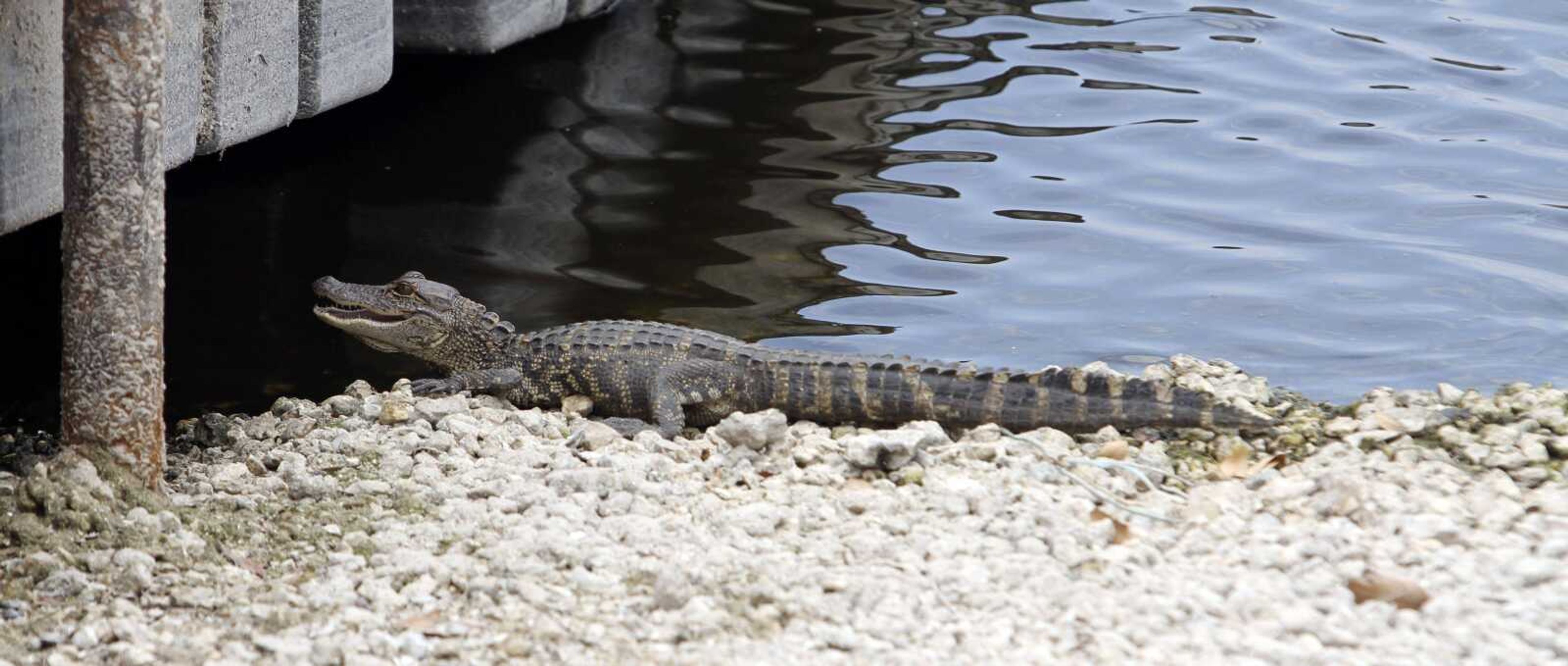Severe Florida drought wilting crops, sinking lake water levels
WEST PALM BEACH, Fla. -- A severe drought across vast swaths of Florida is wilting crops, sparking wildfires and sinking one of the country's largest lakes to historically low levels. The majority of the state is experiencing the drought, prompted by La Nina conditions characterized by unusually cold ocean temperatures that are causing similar dry spells across the southern U.S., from New Mexico all the way to the Atlantic coast and north to Delaware...
WEST PALM BEACH, Fla. -- A severe drought across vast swaths of Florida is wilting crops, sparking wildfires and sinking one of the country's largest lakes to historically low levels.
The majority of the state is experiencing the drought, prompted by La Nina conditions characterized by unusually cold ocean temperatures that are causing similar dry spells across the southern U.S., from New Mexico all the way to the Atlantic coast and north to Delaware.
"This one seems to be a different beast," said Brian Fuchs, a climatologist at the National Drought Mitigation Center at the University of Nebraska-Lincoln. "I think we're going to see things probably get worse before we see improvement."
Even as Florida starts its rainy season -- which in its first week has been bone dry -- showers can only do so much to reverse months of below-normal precipitation. A best-case scenario this summer might only lift the hardest-hit areas from the highest drought rating to one still rated severe.
The South Florida Water Management District, a 16-county area of central and South Florida with 7.7 million residents, recorded rainfall between Oct. 2 and Monday of just under 12.5 inches, nearly 11 inches below average. The period from October through February ranked as the driest such timeframe in the district in 80 years.
That's drying out Lake Okeechobee, the backup reservoir for 5 million people, which stood at just 9.81 feet Wednesday, 3.32 feet below normal and approaching its all-time low of 8.82 feet set in July 2007. That drought ended in August 2008 when Tropical Storm Fay lingered over the state for almost a week, dropping 30 inches of rain in some spots.
Susan Sylvester, the water district's director of operations control, said the current problems are compounded by increased evaporation.
"Every root in every plant is trying to pull out some moisture," she said.
When the lake's levels are too low, it stops the natural gravity flow of its waters into canals that lead to water sources for millions of residents, in turn prompting irrigation restrictions. It also cuts flow to the ecologically fragile Everglades, causing navigation issues for boaters with ramps dried out and drying marsh areas on the lake's banks where wading birds forage for fish.
Rick Roth, a Belle Glade farmer, recently harvested radishes, green beans and lettuce. Radish yields were down about 5 percent, he said; green bean production was on par, but with the added expense of irrigation. And many heads of lettuce never reached full size.
A third-generation farmer who also grows sugarcane, corn and rice, Roth worries more about the crops going forward, particularly if the rainy season doesn't live up to its name.
"We're going to be in worse shape next year than we are this year," he said, "and this year we purely got by by the skin of our teeth."
Dale Erickson, whose farm near Pahokee grows mangoes, lychee and other crops, mustered a positive spin on lower yields. Even with his lychee production 40 percent below average, he had his best season in years, because he's been recovering from the loss of trees to an onslaught of hurricanes in 2004 and 2005. And compared with tornadoes, hurricanes and floods, Erickson says he'll take the drought.
"If we had any of the other ones, we'd be a lot worse," he said.
While many state residents are facing restrictions on watering their lawns, the extent of the drought hasn't hit home for most because in-home usage hasn't been affected. But one noticeable impact has been a string of wildfires blamed, in part, on the dry conditions.
Scott Petrich, wildfire mitigation specialist at the state's Division of Forestry, said 115 such fires have been recorded so far this year in its Everglades District, which includes Florida's four most southeasterly counties, mostly in unpopulated areas. That is nearly triple the normal level.
A motorist simply pulling a car into grass off the side of the road is enough to spark a fire in some areas, Petrich said. About a third of wildfires in the state are caused by lightning, which increases in the summer months.
"Until we get significant amounts of rainfall we're going to be faced with this situation," he said.
Smoke from one large fire west of Miami is closing some roads near the Miccosukee Indian Reservation, which has a large casino and resort. The fire, which began Sunday, has burned almost 30,000 acres but so far no homes are threatened. It is about 25 percent contained. The cause is unknown.
Fuchs said some relief is projected over the next two to three months but, particularly for farmers, the effects can be felt long after.
"The idea that the drought will go away rapidly -- there's a chance of that -- but right now it's not looking like it's going to," he said.
Connect with the Southeast Missourian Newsroom:
For corrections to this story or other insights for the editor, click here. To submit a letter to the editor, click here. To learn about the Southeast Missourian’s AI Policy, click here.









